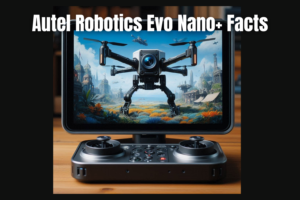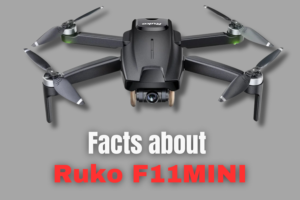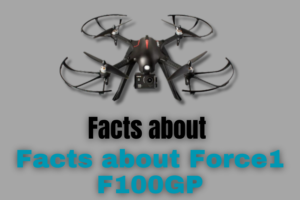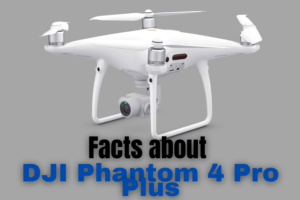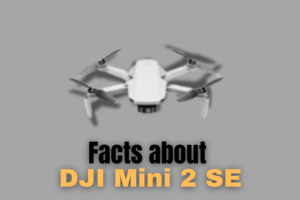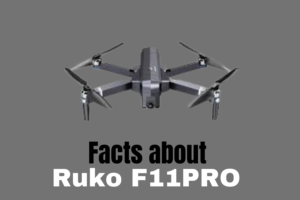
Learn all you need about the DJI Air 3, a drone combining straightforward design with contemporary technologies. The DJI Air 3 changes photography and videography taken from above to a whole new level with its two cameras and long flight time, among other new characteristics. Why is the DJI Air 3 such a popular choice among drone aficionados, regardless of your level of expertise? There are some amazing facts about DJI Air 3.
Here are 20 interesting facts about DJI Air 3:
Facts about DJI Air 3 No1. The DJI Air 3 features two powerful cameras—a wide-angle and a 3x medium telephoto.
Two cameras—a wide-angle and a 3x media telephoto—complement the DJI Air 3. This configuration lets users record many kinds of videos and images. The medium telephoto camera is better for close, more detailed views; the wide-angle camera is better for covering vast areas like landscapes. These cameras taken together provide customers more opportunities to produce exceptional work. Especially for narrative, moving between the two lenses fluidly from wide to close-up views helps add more interest to videos.
Facts about DJI Air 3 No2. Both cameras use 1/1.3-inch CMOS sensors with 48 MP effective pixels.
Both cameras run 48 MP resolution from 1/1.3-inch CMOS sensors. These sensors are designed to gather sharp, clear images even in low light. Higher resolution allows you, in photography and video editing especially, to crop or edit the images without sacrificing quality.
Facts about DJI Air 3 No3. It boasts a maximum flight time of 46 minutes.
With a single charge, the DJI Air 3 can fly for up to 46 minutes giving users enough time to grab the required shots free from battery concern. Aerial videos, inspections, and recreational flying are among the several purposes this long flying time serves. Given the longer battery and power system of the drone, users could concentrate more on their work or hobby.
Facts about DJI Air 3 No4. The maximum hovering time is 42 minutes.
The drone’s ability to remain in one spot for up to 42 minutes helps for consistent shots. Longer hovering times allow users to take their time carefully arranging the picture or video. When the drone has to remain motionless as it is being watched or tracked, it also helps. Good stabilization mechanisms in the DJI Air 3 help to keep it steady even in the wind. This qualifies this drone as dependable for both leisure and business.
Facts about DJI Air 3 No5. The drone can reach a maximum horizontal speed of 21 m/s (about 75.6 km/h) at sea level with no wind.
At sea level without wind, the DJI Air 3 can reach a top speed of 21 meters per second (about 75.6km/h). This makes it fit for jobs including mapping, surveying, and search and rescue since it allows one to cover vast areas fast. This also helps recreational users who value quick flights. Whether your needs call for slow, detailed images or fast-paced movements, the drone is simple to operate, and you can change between several speed settings. For many applications, the DJI Air 3 is a flexible and robust choice of speed and control mix.
Facts about DJI Air 3 No6. It can resist wind speeds up to 12 m/s.
The DJI Air 3 can manage winds up to 12 meters per second, enabling the drone to remain steady and simple to operate even in windy circumstances. Whether they are using the drone for photography or inspections, this is beneficial for professionals who depend on it to operate consistently in various surroundings. For those working in various and occasionally erratic conditions, the drone is a consistent choice since its design and sophisticated systems cooperate to keep it steady during flight.

Facts about DJI Air 3 No7. The maximum takeoff altitude is 6000 meters.
The DJI Air 3 can take off and soar to a height of 6,000 meters. This allows users to get unusual views from high above, so providing lower altitude drones cannot offer. For landscape photography in particular, where displaying the scale of a scene from a high viewpoint can produce striking images, this is especially helpful. Flying at such altitudes also enables users to reach far-off locations to capture otherwise difficult-to-obtain images and videos. Professionals who must operate in challenging locations, adventurers, and researchers will find the DJI Air 3’s high-altitude capability useful.
Facts about DJI Air 3 No8. It features an omnidirectional obstacle sensing for safer flights.
The DJI Air 3’s sensors allow it to identify objects in all directions, enhancing the safety of flights. This system can change the drone’s course to prevent collisions and detect objects using several sensors. This function increases safety; thus, the DJI Air 3 is a good choice for both novice and experienced users. Professionals especially benefit from it since it lowers the possibility of mishaps and guarantees the safe completion of chores. This extra safety element helps users concentrate on their work with more assurance.
Facts about DJI Air 3 No9. Equipped with the O4 HD video transmission system, it offers enhanced transmission stability.
The O4 HD video transmission system included with the DJI Air 3 enhances the stability of the video feed from the drone to the controller. For professional use especially, this allows users to view clearly and live what the drone is capturing, facilitating framing shots. The system also extends the range so users may fly the drone farther without losing the link. Long-range jobs like search and rescue operations or large-area surveying depend on this. The steady video feed enhances the whole experience and increases the capabilities of the DJI Air 3.
Facts about DJI Air 3 No10. The drone has 8 GB of internal storage.
Internal storage for the DJI Air 3 runs at 8 GB. If users forget an SD card, this storage lets them save images and videos straight to the drone, thus preventing missed crucial shots. Internal storage serves either as a backup or for fast file access. Saving massive, high-resolution images and videos especially benefits from it. The drone is flexible and handy since users may quickly move files to another device for editing and distribution.
Facts about DJI Air 3 No11. The ISO range for video is 100-6400 (Normal), 100-1600 (D-Log M), and 100-1600 (HLG).
This broad spectrum lets users change the camera’s light sensitivity, facilitating various lighting conditions. It helps to get decent low-light footage. Users of Normal, D-Log M and HLG modes have flexibility in several ISO settings. D-Log M and HLG target professionals seeking more choices for dynamic range and color grading in post-production. Changing the ISO range lets users obtain the quality required for various lighting environments.
Facts about DJI Air 3 No12. The wide-angle camera supports a shutter speed range from 1/16000 to 2 seconds.
Users of this wide range can take long-exposure shots for artistic effects or clearly capture fast-moving objects. Action shots benefit from fast shutter speeds; artistic effects like light trails benefit from slower speeds. For professionals, being able to adjust the shutter speed allows consumers more control over exposure and motion blur in images and videos. With this range of shutter speeds, users may photograph several scenes using the style and detail they wish.
Facts about DJI Air 3 No13. It can record 4K video at up to 100 fps and FHD video at up to 200 fps.
Up to 100 fps, the DJI Air 3 can capture 4K video; up to 200 fps, it can capture Full HD video. Professional videos and cinematic projects will find the 4K video excellent in clarity and detail. Smooth slow-motion playback made possible by 100 fps records gives dramatic effects to action scenes. Particularly for catching fast-moving subjects like sports or wildlife with clear detail, full HD video at 200 fps offers even more choices for slow-motion footage. High resolution and frame rates enable consumers to produce excellent material for business needs.
Facts about DJI Air 3 No14. Both cameras support vertical shooting, making it great for social media content.
Using vertical-format cameras in DJI Air 3 helps create social media content. On websites like Instagram and TikHub, vertical videos and images are preferred; hence, this feature helps create posts looking professional and attractive. Simple vertical and horizontal view switching allows users to capture several types of material without further tools. This makes the drone helpful for content creators who have to create several types of media fast.
Facts about DJI Air 3 No15. It supports Waypoint Flight, Advanced RTH, Cruise Control, and QuickTransfer.
On the DJI Air 3, advanced features abound, including Waypoint Flight, Advanced Return to Home (RTH), Cruise Control, and QuickTransfer. Users of Waypoint Flight can design a specific flight path for the drone to follow automatically for tasks, including mapping. Advanced RTH returns the drone to its starting point should the battery run low, or the signal be lost, adding convenience and safety. While Cruise Control helps maintain a constant flying speed for better video, QuickTransfer makes file movement from the drone to a phone easy. These tools improve drone adaptability and simplify the use of the device.
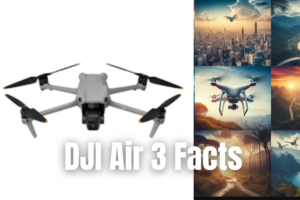
Facts about DJI Air 3 No16. The drone operates efficiently in temperatures ranging from -10°C to 40°C.
Between -10°C and 40°C the DJI Air 3 performs as expected. The drone can be run in many different surroundings, from hot summer locations to cold winter areas, thanks to this wide spectrum. Professionals working in demanding environments, such hot deserts or snowy mountains, will find its ability to control extreme conditions valuable. This makes the drone reliable for experts as well as enthusiasts.
Facts about DJI Air 3 No17. It uses GPS, Galileo, and BeiDou for global navigation.
The drone uses GPS, Galileo, and BeiDou navigation systems for precise placement and consistent flights. These several systems keep the drone on target even in areas where signals are limited or blocked. This is especially useful for jobs like mapping, where accuracy is vital and guarantees the drone performs well at several sites.
Facts about DJI Air 3 No18. The wide-angle camera has an aperture of f/1.7, while the medium telephoto camera has an aperture of f/2.8.
Two different aperture sized cameras on the DJI Air 3 Whereas the medium telephoto camera boasts an aperture of f/2.8, the wide-angle camera features f/1.7. When shooting in darker environments, the larger f/1.7 aperture lets in more light, which facilitates a blurriness of background effect. This function is fantastic for creative picture capturing.
For many kinds of photography, the f/2.8 aperture of the medium telephoto camera provides a decent combination of light control and sharpness. The aperture lets users control the amount of light entering the camera and the focus of the picture. This helps them to regulate the appearance of their pictures and videos independent of the lighting conditions.
also read: Facts about DJI Avata 2
Facts about DJI Air 3 No19. Both cameras support burst shooting modes with various frame options.
Both cameras on the DJI Air 3 can rapidly shoot multiple images one after the other. When photographing fast-moving objects, such as those found in sports or wildlife, timing is crucial and this helps. Whether in terms of composition or focus, users can follow the photo sequence and choose the one that looks the best.
Facts about DJI Air 3 No20. It can capture 10-bit HDR video, providing more flexibility in post-production.
The DJI Air 3 records video in 10-bit HDR, enhancing detail in both light and dark areas of a scene. In high contrast environments, such sunsets, this is helpful. Better color editing made possible by the 10-bit recording enables consumers to produce excellent videos with rich colors and sharp details. Filmmakers and content creators who wish for professional-looking footage will especially benefit from this function.

